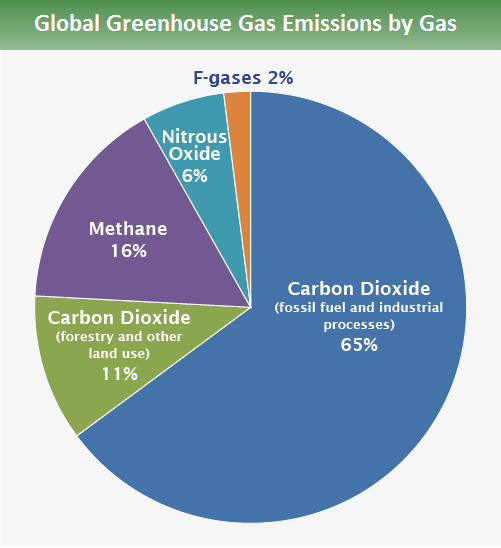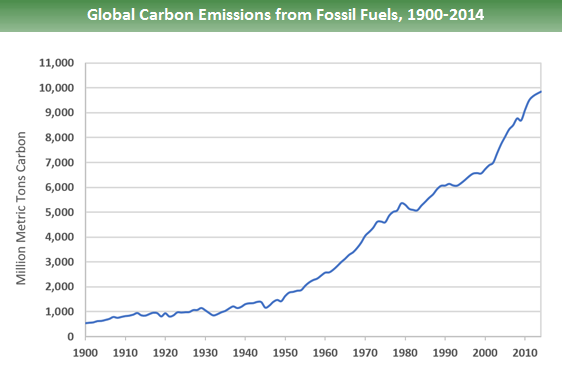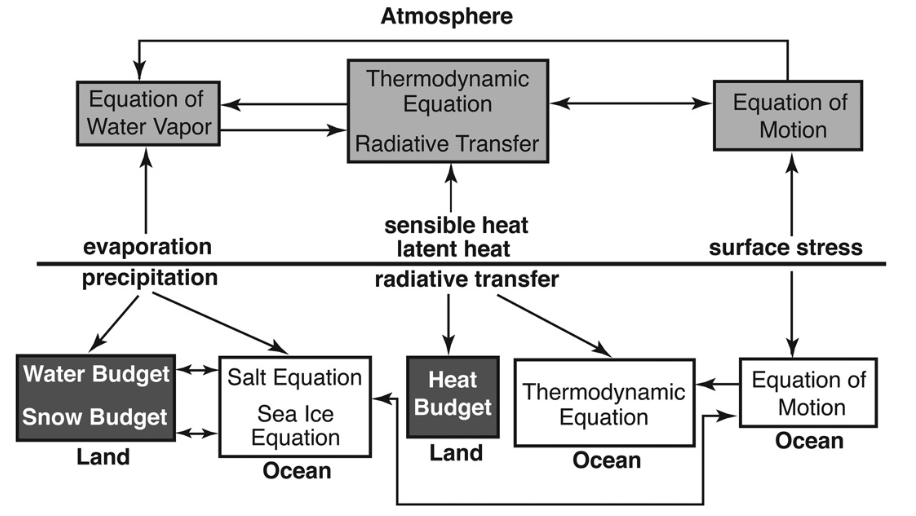Introduction
The longstanding issue with climate change has been recognized as a source of a majority of current and future disasters that endanger the lives of all species on the planet. Such changes have happened before human civilization, but the current situation is caused by the direct impact of anthropogenic activities on the environment. Modern industries, transport, and even everyday appliances generate dangerous emissions that contribute to global warming at alarming rates. Figure 1 shows the percentage of each type of greenhouse gas emitted into the atmosphere.

Main body
The major part of these greenhouse gas emissions is carbon dioxide, which is produced by the burning of fossil fuels, agriculture activities (“Global greenhouse gas emissions data”). This report highlights the effects of CO2 emissions, their past and present levels, and their role in global warming.
The temperature of the Earth increases in its every part each year. Energy balance is at substantial risk due to the interruptions of crucial processes that allow the planet to deal with excessive energy and absorb the required amounts from solar radiation. Manabe explains that “The energy balance of the Earth is maintained between the net incoming solar, shortwave radiation and outgoing terrestrial, longwave radiation at the top of the atmosphere” (1). Greenhouse gases constitute a minor portion of the atmosphere, yet even this small amount absorbs the most significant part of the longwave radiation that is emitted by the surface of the planet (Manabe 2). Their concentration has been increasing over the past century at a rapid pace.
The positive changes brought by the industrial revolution allowed civilization to develop new technologies at astounding speed and increased overall quality of life. However, previously unforeseen side effects have accumulated over the years (see Fig. 2) and now pose a serious threat to the planet.

The widespread usage of fossil fuels in vehicles increased CO2 emissions by 90% since 1970 (“Global greenhouse gas emissions data”). The measures that were taken to mitigate the issue did not provide meaningful results, and anthropogenic activities continue to release an alarming amount of dangerous chemicals into the atmosphere.
Current methods of emission measurement allow scientists to determine the concentration of greenhouse gases and their fluctuations precisely. The micrometeorological technique and the closed chamber technique are the general means of this evaluation. (Kumar et al. 2). The micrometeorological method involves a continuous measurement of eddies covariance. Kumar et al. explain that “By finding the covariance between the vertical wind speed fluctuations with fluctuation in temperature, humidity, carbon dioxide, methane, sensible and latent heat, etc., fluxes of these variables are determined” (2). The closed chamber technique provides information on the short-term buildup of gas emissions from a singled-out soil surface (Kumar et al. 1). By knowing this data, scientists can work on balancing out the greenhouse gas sources and sinks.
The atmosphere-ocean-land model (see Fig. 3) of interaction provides a foundation for the theoretical methods through which scientists obtained data on the past CO2 emission rates.

Changes in the amount of carbon dioxide in the atmosphere have been calculated based on the water vapor feedback and snow albedo feedback (Manabe 5). This discovered equilibrium provided a solid ground for future predictions of global climate changes.
The higher concentration of greenhouse gases interrupts or alters the rates of natural energy exchange processes. Manabe states that “the thermal energy available for evaporation increases at Earth’s surface” (11). Several observable changes are produced as a result of this effect, and they include further disparity in water distribution, changes in latitudinal profiles, and ocean warming (Manabe 1). Due to CO2 emissions, natural means of water transportation across the planet have been impaired, and predictions show that existing differences in water-poor and water-rich regions will only continue to grow (Manabe 12). Already existing problems for large populations that live in arid areas will only get worse if humanity will not find a way to reduce the concentration of accumulated greenhouse gases.
The interaction between the ocean’s surface and the atmosphere has been negatively affected by increased amounts of carbon dioxide. The ocean absorbs any excessive amounts of heat from the atmosphere, and this process speeds up along with increased saturation of air with vapors from the greenhouse effect (Manabe 8). The global water cycle gains strength and gets more localized due to this issue.
Conclusion
In conclusion, due to technological progress, humanity has been able to significantly improve the living conditions of an average person and speed up knowledge accumulation, yet it did not come without a cost. Global warming is affected by anthropogenic activities, such as industrial waste output, energy production, agriculture, forestry, and other land use, and transportation, all of which increase the concentration of greenhouse gases in the atmosphere (“Global greenhouse gas emissions data”). Predictions about future issues that come from the greenhouse effect include increased severity and occurrence of natural disasters and more prominent water shortages in dry regions (Manabe 12). Scientists have implemented various ways to measure CO2 levels and their impact, yet humanity still needs to discover an efficient way to negate the accumulated damage to the planet.
Works Cited
“Global Greenhouse Gas Emissions Data.” Environmental Protection Agency, 2019. Web.
Kumar, A., et al. “Eddy Covariance Flux Tower: A Promising Technique for Greenhouse Gases Measurement.” Advances in Plants & Agriculture Research, vol. 7, no. 4, 2017. Web.
Manabe, Syukuro. “Role of Greenhouse Gas in Climate Change**.” Tellus A: Dynamic Meteorology and Oceanography, vol. 71, no. 1, 2019. Web.